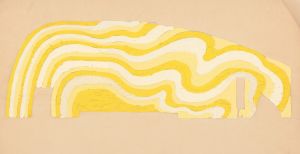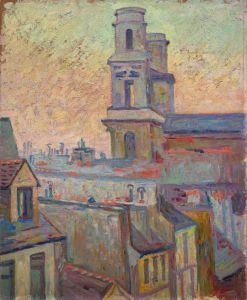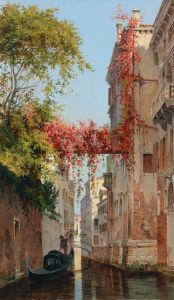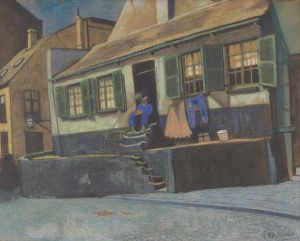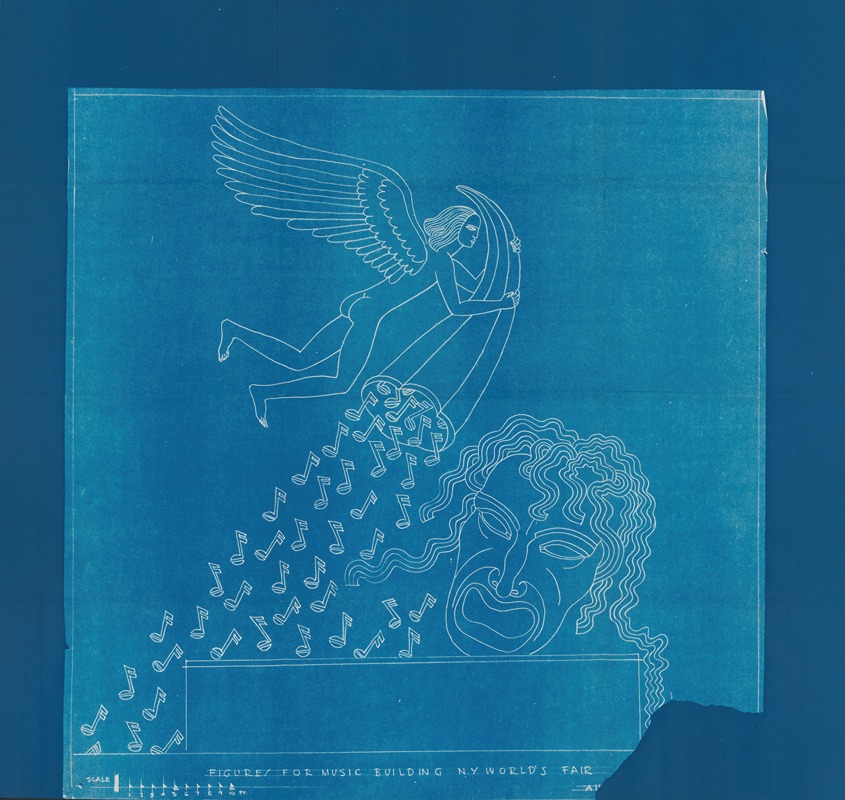
Design for Figures of Music Building, New York World’s Fair, 1939.] [Elevation detail
A hand-painted replica of Winold Reiss’s masterpiece Design for Figures of Music Building, New York World’s Fair, 1939.] [Elevation detail, meticulously crafted by professional artists to capture the true essence of the original. Each piece is created with museum-quality canvas and rare mineral pigments, carefully painted by experienced artists with delicate brushstrokes and rich, layered colors to perfectly recreate the texture of the original artwork. Unlike machine-printed reproductions, this hand-painted version brings the painting to life, infused with the artist’s emotions and skill in every stroke. Whether for personal collection or home decoration, it instantly elevates the artistic atmosphere of any space.
Winold Reiss was a German-American artist known for his work in portraiture and design, particularly his contributions to American art and architecture in the early to mid-20th century. One of his notable projects was his involvement in the 1939 New York World’s Fair, where he was commissioned to create designs for various pavilions and exhibits. Among these works was the "Design for Figures of Music Building," which included detailed elevation drawings.
The 1939 New York World’s Fair, held in Flushing Meadows-Corona Park, Queens, was a significant cultural event that showcased the theme "The World of Tomorrow." It aimed to present a vision of the future, emphasizing technological innovation and cultural exchange. The fair featured numerous pavilions dedicated to different countries, corporations, and themes, each designed to highlight advancements and cultural achievements.
Reiss's contribution to the fair included designs that were both decorative and functional, integrating his distinctive style that combined elements of modernism with vibrant color schemes and intricate patterns. His work often reflected his interest in cultural diversity and his ability to blend different artistic traditions.
The "Design for Figures of Music Building" was part of the fair's broader artistic and architectural landscape. While specific details about this particular design are limited, Reiss's involvement typically included creating murals, mosaics, and other decorative elements that adorned the interiors and exteriors of buildings. His designs were known for their dynamic compositions and use of bold colors, which were intended to capture the spirit of the fair and its optimistic vision of the future.
Reiss's work at the fair was well-received, contributing to his reputation as a leading artist in the field of public art and design. His ability to create visually striking and thematically relevant works made him a sought-after artist for large-scale projects. The fair itself was a landmark event, attracting millions of visitors and leaving a lasting impact on American culture and design.
In summary, Winold Reiss's "Design for Figures of Music Building" at the 1939 New York World’s Fair exemplifies his unique artistic style and his contribution to one of the most significant cultural events of the 20th century. His work at the fair highlighted his skill in integrating art with architecture, creating designs that were both aesthetically pleasing and thematically resonant with the fair's vision of progress and innovation.





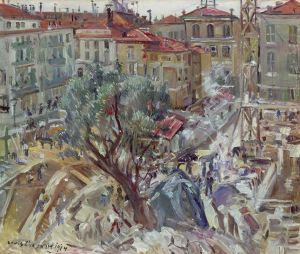
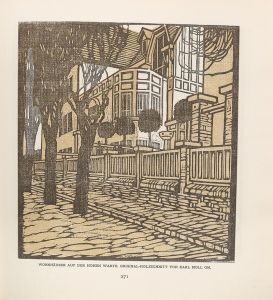
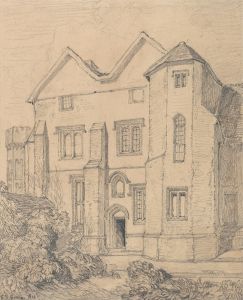
![[Graphic designs for Fortune magazine.] [Study for cover with telephone lines and wings over the globe](/imgs/249241/s/winold-reiss-graphic-designs-for-fortune-magazine-study-for-cover-with-telephone-lines-and-wings-over-the-globe-5933e802.jpg)
![Design for the Lentheric Salon, Fifth Ave. & 58th St., Savoy-Plaza Hotel, New York, NY.] [Perspective sketch](/imgs/249294/s/winold-reiss-design-for-the-lentheric-salon-fifth-ave-58th-st-savoyplaza-hotel-new-york-ny-perspective-sketch-d1e86315.jpg)
![Design for unidentified ballroom, probably New York City area.] [Perspective rendering in vermillion and gold](/imgs/249296/s/winold-reiss-design-for-unidentified-ballroom-probably-new-york-city-area-perspective-rendering-in-vermillion-and-gold-a55c65e4.jpg)
![Design for unidentified bedroom with canopy bed.] [Interior perspective elevation](/imgs/249297/s/winold-reiss-design-for-unidentified-bedroom-with-canopy-bed-interior-perspective-elevation-72bee5bc.jpg)
![Designs and photographs for alterations to St. James Bar Restaurant, W. 181 St. and New York, NY.] [Study of exterior elevation](/imgs/249306/s/winold-reiss-designs-and-photographs-for-alterations-to-st-james-bar-restaurant-w-181-st-and-new-york-ny-study-of-exterior-elevation-c23a0b8e.jpg)

![Designs for theater with black-framed proscenium and boldly colored settings.] [Study for stage light wall decoration, possibly for Caf ̌Crillon](/imgs/249419/s/winold-reiss-designs-for-theater-with-blackframed-proscenium-and-boldly-colored-settings-study-for-stage-light-wall-decoration-possibly-for-caf-crillon-8d25205e.jpg)
